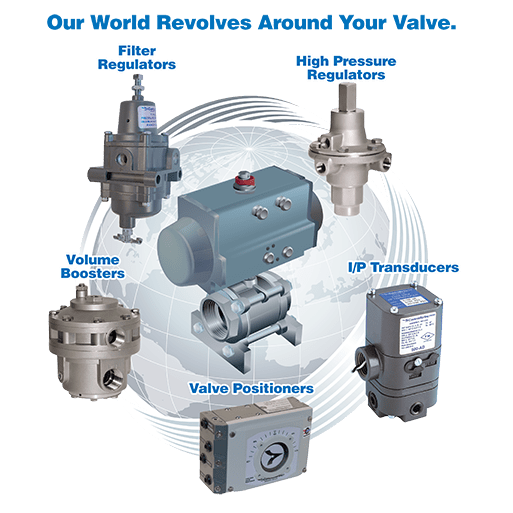Checking out the Functionality of Modern Control Valves in Industrial Applications
Checking out the Functionality of Modern Control Valves in Industrial Applications
Blog Article
Enhance Structure Procedures With Costs Automation Controls for Controllers
In the world of modern structure procedures, the integration of premium automation controls for controllers has actually ended up being a critical aspect in making sure optimum effectiveness and efficiency. The utilization of innovative automation innovations offers a sophisticated strategy to taking care of building systems, resulting in boosted functional abilities and streamlined processes. By utilizing the power of costs automation controls, structures can achieve unmatched levels of power performance, system dependability, and cost-effectiveness. This tactical application not just boosts the overall performance of the infrastructure but likewise equips drivers with enhanced control and adaptability. The importance of these premium manages in enhancing building procedures is obvious, leading the means for a much more lasting and reliable future in facility monitoring.
Enhancing Structure Effectiveness Via Automation Controls
Improving structure efficiency is vital in today's design and style sector, with automation controls playing a critical duty in achieving optimal efficiency. By incorporating advanced automation controls into constructing designers, systems and engineers can create smart, energy-efficient structures that respond dynamically to changing environmental problems. These controls allow for the seamless monitoring and administration of numerous structure functions, such as lights, cooling and heating systems, and security methods, leading to enhanced operational performance and price financial savings.
Automation controls make it possible for real-time data analysis and changes, guaranteeing that buildings operate at peak efficiency levels while lessening energy waste. With using sensors, actuators, and centralized control systems, structures can adapt their setups based on tenancy patterns, outside weather, and time of day. This level of automation not only enhances the convenience and efficiency of building residents yet likewise adds to sustainability efforts by reducing total power intake and carbon discharges.
Maximizing Power Financial Savings With Costs Controls
With the assimilation of costs automation controls into building designers, systems and developers can even more optimize energy effectiveness, improving the general functional performance of frameworks. Costs controls offer innovative functions such as occupancy sensors, scheduling abilities, and adaptive algorithms that enable specific surveillance and change of power use. By leveraging these capabilities, structures can dynamically react to transforming occupancy patterns and ecological conditions, ensuring that energy is only taken in when needed. Additionally, premium controls facilitate the sychronisation of various structure systems, such as COOLING AND HEATING, lighting, and shading, to run in harmony towards reducing energy waste. With real-time information analytics and anticipating modeling, these controls can determine inefficiencies and opportunities for enhancement, allowing for continual refinement of energy-saving methods. On the whole, the application of premium automation controls not only reduces energy prices but likewise adds to an extra environmentally pleasant and sustainable constructed environment.

Improving System Efficiency and Dependability
The assimilation of costs automation controls right into developing systems enhances operational effectiveness, making sure optimum performance and reliability. Furthermore, premium automation controls supply information analytics that offer insights into system performance fads, allowing for constant optimization and fine-tuning of procedures. On the whole, the unification of premium from this source automation regulates elevates system performance and reliability, ultimately contributing to an extra sustainable and efficient structure environment.
Minimizing Operational Expenses With Automation Technology
The implementation of automation technology in building systems not only improves performance and dependability yet also plays an essential role in driving down functional costs. control valves. By leveraging sophisticated automation controls, developing drivers can maximize power intake, lower waste, and streamline upkeep procedures. Automation innovation allows exact monitoring and control of numerous structure systems such as COOLING AND HEATING, protection, and lights, resulting in extra reliable operations. Via the integration of sensing units and data analytics, automation systems can recognize inadequacies and immediately readjust settings to ensure ideal performance while lessening energy usage. Furthermore, automation innovation assists in anticipating upkeep by identifying potential problems early, preventing costly repair work and downtime. By systematizing control and automating routine jobs, operational prices can be considerably minimized, liberating resources for other important building upgrades or investments. In general, the tactical execution of automation modern technology not just boosts Homepage functional performance yet likewise adds to long-lasting cost financial savings for structure owners and supervisors.
Enhancing Control and Adaptability for Operations

In addition, these systems enable seamless integration with various other building administration technologies, such as energy monitoring systems and safety methods, developing a thorough environment that enhances operations and enhances total performance (control valves). The ability to from another location access and adjust settings further improves control and flexibility, enabling for speedy feedbacks to changing functional demands. Eventually, purchasing costs automation regulates not just improves the daily procedures of a building however additionally causes long-lasting cost savings and sustainability benefits
Conclusion
These controls boost performance, optimize power cost savings, enhance system efficiency and dependability, decrease operational expenses, and enhance control and adaptability for operations. It is vital for organizations to invest in costs automation controls to achieve better structure efficiency and functional end results.
By utilizing the power of premium automation controls, structures can attain unrivaled degrees of energy performance, system integrity, and cost-effectiveness. In general, the consolidation of costs automation controls elevates system performance and integrity, eventually adding to an extra effective and sustainable structure setting.
Automation innovation allows accurate monitoring and control of different building systems such as HVAC, lights, and protection, leading to much more effective wikipedia reference operations. These controls enhance effectiveness, take full advantage of energy savings, boost system efficiency and reliability, decrease functional costs, and boost control and versatility for procedures. It is crucial for organizations to spend in premium automation regulates to attain much better structure efficiency and functional outcomes.
Report this page